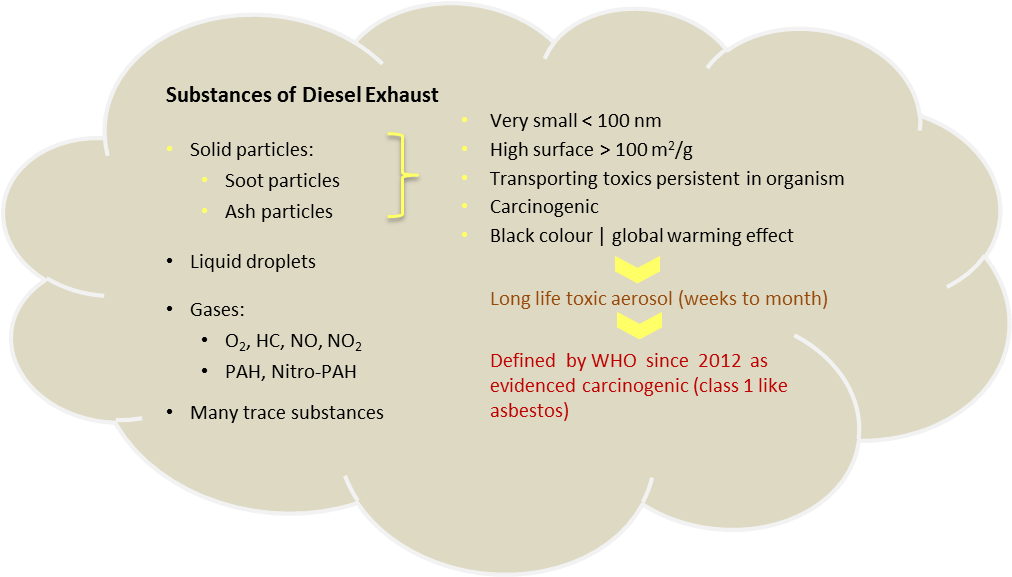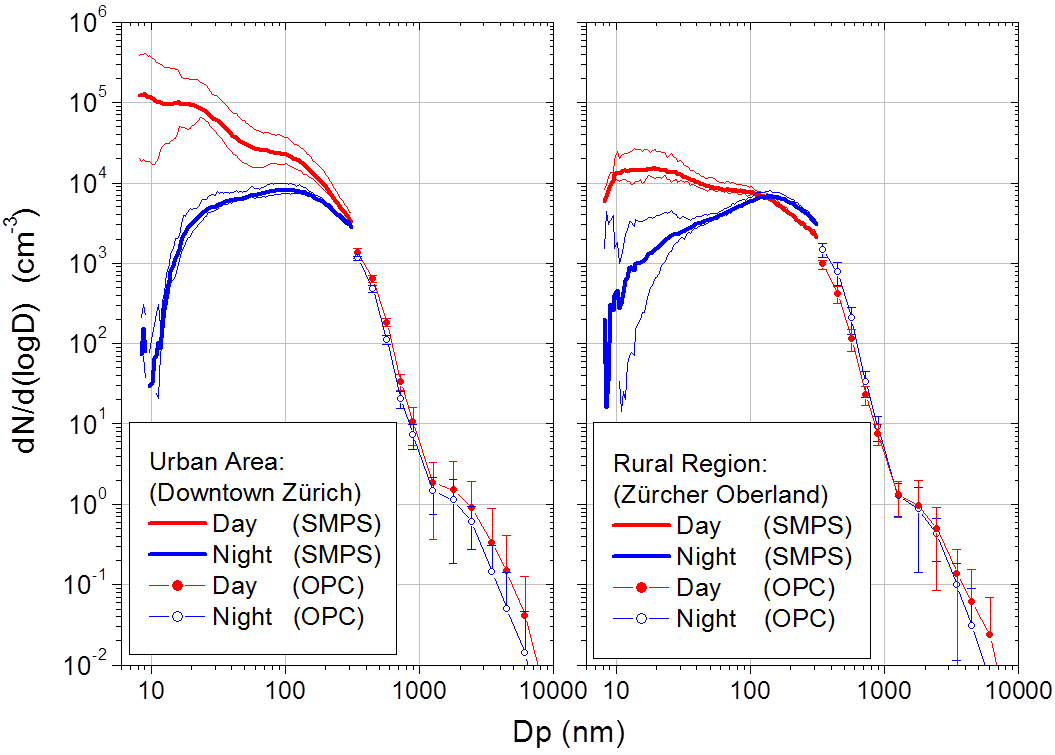Health Effects & Benefits
Diesel Particles and Their Consequences
The main particulate fraction of diesel exhaust consists of small particles, size range in nanometers (20 – 300 nm). Because of their small size, inhaled particles may easily penetrate deep into the lungs and from there they penetrate into the blood, even via smelling they may enter the brain directly.
of small particles, size range in nanometers (20 – 300 nm). Because of their small size, inhaled particles may easily penetrate deep into the lungs and from there they penetrate into the blood, even via smelling they may enter the brain directly.
They bind also with other toxins in the environment, thus increasing the hazards of particle inhalation. Exposures have been linked with acute short-term symptoms such as headache, dizziness, light-headedness, nausea, coughing, difficult breathing, tightness of chest, and irritation of the eyes and nose and throat. Longterm exposures can lead to chronic, more serious health problems such as cardiovascular disease, cardiopulmonary disease, and lung cancer. Exposure to diesel exhaust and DPM is a known occupational hazard to truckers, railroad workers, and miners using diesel-powered equipment in underground mines. Adverse health effects have also been observed in the general population at ambient atmospheric particle concentrations well below the concentrations in occupational settings.

Diesel Particle Amount in Urban and Rural Areas in Comparision

